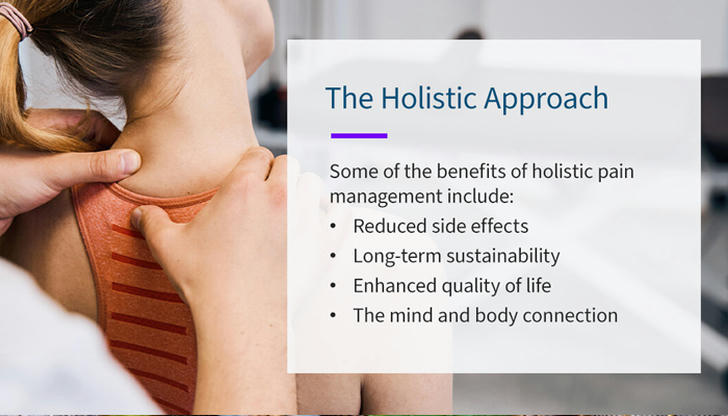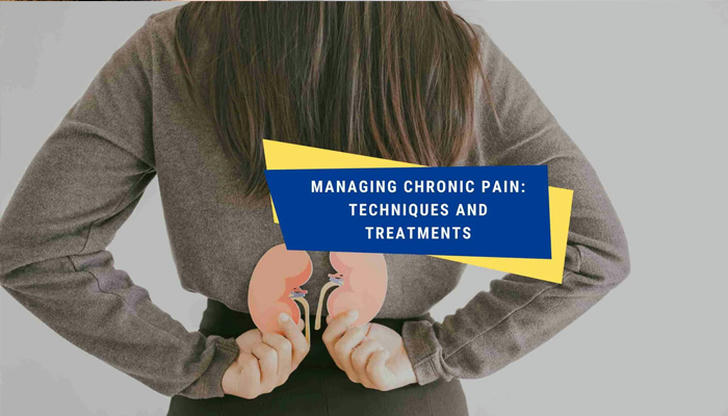Managing Chronic Pain: Holistic Approaches and Medical Solutions
Introduction
Chronic pain is a complex and often life-altering condition that affects millions of people globally. Unlike acute pain, which serves as a temporary warning signal of injury, chronic pain persists for weeks, months, or even years. The International Association for the Study of Pain (IASP) defines chronic pain as pain lasting longer than three months or beyond the normal healing time.
Studies estimate that over 20% of adults worldwide suffer from chronic pain, with many experiencing significant impairments in mobility, emotional well-being, and quality of life. Addressing chronic pain requires more than just symptom control—it calls for a comprehensive, multidisciplinary approach that incorporates both medical interventions and holistic strategies.

1. Understanding Chronic Pain
Common Causes
Chronic pain can arise from a variety of sources, including:
- Arthritis: inflammation of joints causing stiffness and discomfort
- Fibromyalgia: a disorder characterized by widespread musculoskeletal pain
- Neuropathy: nerve damage often related to diabetes or injury
- Back pain: from herniated discs or spinal degeneration
- Chronic headaches: including migraines and tension-type headaches
The Brain-Body Connection
Research has shown that chronic pain not only affects the body but also alters brain activity. The nervous system can become sensitized, meaning that even mild stimuli may be perceived as painful—a process known as “central sensitization.”
Psychosocial Influences
Psychological factors such as stress, depression, and past trauma can influence how pain is experienced. Social support, beliefs about pain, and coping strategies also play significant roles in pain perception.
2. Medical Solutions
Conventional medicine offers several evidence-based tools for managing chronic pain. However, treatment plans must be individualized based on cause, severity, and patient tolerance.
Medications
- Nonsteroidal Anti-inflammatory Drugs (NSAIDs): Effective for inflammatory conditions such as arthritis, though long-term use may affect the gastrointestinal system.
- Opioids: Prescribed cautiously due to risks of dependence and tolerance. They may be suitable for short-term or cancer-related pain.
- Antidepressants: Certain types (e.g., amitriptyline, duloxetine) are used for nerve-related pain.
- Anticonvulsants: Medications like gabapentin are commonly prescribed for neuropathic pain.
Interventional Techniques
- Nerve Blocks: Temporary interruption of pain signals via injected anesthetics
- Epidural Injections: Often used for back or spinal pain
- Surgical Interventions: Reserved for cases where structural abnormalities are identified (e.g., herniated disc)
Physical Therapy
Rehabilitation through guided movement, posture correction, and strengthening exercises can help restore function and reduce pain. This is often done under the supervision of licensed physiotherapists.
Limitations and Side Effects
While medical treatments are often necessary, they may come with side effects, diminishing returns, or contraindications. Thus, they are most effective when part of a broader management plan.

3. Holistic and Complementary Approaches
Holistic strategies focus on the person as a whole—mind, body, and spirit—and can be integrated with conventional medicine for a more balanced approach.
Mind-Body Practices
- Yoga and Tai Chi: Gentle movement practices shown to reduce pain and improve flexibility
- Meditation: Mindfulness meditation has been associated with reduced pain intensity and increased emotional resilience
- Biofeedback: Teaches control over physiological functions like heart rate or muscle tension, helping reduce pain flare-ups
Nutrition and Anti-Inflammatory Diets
Emerging evidence suggests that certain foods can influence inflammation levels. Diets rich in:
- Omega-3 fatty acids (e.g., fatty fish, flaxseed)
- Leafy greens
- Berries
- Whole grains
may contribute to lower levels of systemic inflammation. Limiting sugar, refined carbs, and trans fats is also recommended.
Acupuncture and Massage
- Acupuncture: Insertion of fine needles into specific body points. Clinical trials have shown its effectiveness in back pain and osteoarthritis.
- Massage therapy: Can help relax tense muscles, improve circulation, and reduce stress.
Herbal Remedies
Some individuals turn to natural supplements like turmeric, ginger, or capsaicin. While promising, it is essential to consult a healthcare provider, as some herbs may interact with medications.
4. The Role of Mental Health
The Pain-Mood Connection
Chronic pain and mental health are closely linked. Depression and anxiety are more common among those living with long-term pain. This cycle—where pain worsens mood, and low mood worsens pain—can significantly impair recovery.
Psychological Interventions
- Cognitive Behavioral Therapy (CBT): Helps reframe negative thought patterns that may exacerbate pain
- Mindfulness-Based Stress Reduction (MBSR): Combines meditation and yoga to promote awareness and acceptance
- Support Groups: Provide emotional validation and coping strategies from peers experiencing similar challenges

5. Lifestyle Modifications
Daily habits can have a powerful effect on pain levels and overall well-being.
Physical Activity
Although it may seem counterintuitive, regular movement can help reduce pain intensity over time. Low-impact exercises like walking, swimming, or stretching can improve circulation, reduce stiffness, and enhance endorphin release.
Sleep Hygiene
Poor sleep is common in individuals with chronic pain. Strategies to improve sleep include:
- Maintaining a regular bedtime
- Avoiding screen exposure before sleep
- Creating a quiet, dark sleeping environment
Stress Management
Chronic stress can exacerbate pain symptoms. Techniques such as deep breathing, journaling, or spending time in nature may help regulate stress responses.
Smoking and Alcohol
Tobacco use and excessive alcohol consumption are associated with increased inflammation and reduced pain tolerance. Reducing or eliminating these habits may support better pain outcomes.
6. Building a Personalized Pain Management Plan
Effective chronic pain management often involves multiple professionals, including:
- Primary care physicians
- Pain specialists
- Physical therapists
- Psychologists
- Dietitians
Setting Goals
Goals should be realistic and focused on improving function rather than eliminating pain completely. For example:
- “Walk for 15 minutes without stopping”
- “Sleep at least 6 hours per night”
Monitoring Progress
Pain journals, mobile apps, or scheduled check-ins can help track symptoms, identify patterns, and measure improvements.
Communication with Healthcare Providers
Open dialogue about what treatments are working—or not working—is critical. Patients are encouraged to report side effects, treatment preferences, and emotional concerns to tailor their care.
Conclusion
Chronic pain is a multifaceted condition that rarely has a one-size-fits-all solution. A balanced approach that combines medical therapies with holistic strategies can offer the most sustainable relief. By understanding the nature of pain and exploring both conventional and complementary methods, individuals can regain a sense of control over their health.
Empowerment, education, and ongoing support are key components of any pain management journey. With time, patience, and a comprehensive plan, it is possible to improve daily functioning and enhance quality of life—even when living with chronic pain.
